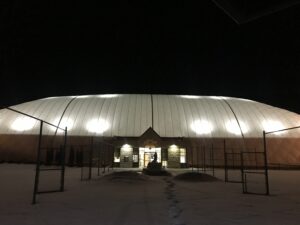Introduction: In sports facilities, customer experience is one of the key factors that determines a venue’s success. One often overlooked element that directly impacts this experience is the management of customer flow. Proper facility flow management ensures that visitors can easily navigate your sports venue, enjoy a seamless experience, and engage with the services offered. In this post, we’ll explore how efficient flow management can significantly improve customer satisfaction and ultimately boost revenue for your sports facility.
1. Streamlining Entry and Exit Points The first impression visitors have of your facility begins at the entrance. A well-designed entry and exit system ensures that people can move in and out of the venue quickly and efficiently, minimizing wait times. Long queues or confusing signage can lead to frustration, while a smooth, intuitive entry system creates a positive first impression and sets the tone for the rest of the visit. Additionally, clear and convenient exits encourage a safe and pleasant departure, leaving customers with a good overall experience.
2. Optimizing Pathways to Key Areas One of the critical aspects of facility flow management is creating clear and intuitive pathways to important areas, such as courts, seating, concessions, and restrooms. When visitors can easily find their way around, they are more likely to engage with the facility’s services, increasing their satisfaction and the likelihood of repeat visits. For example, strategically placed signage, well-lit walkways, and logical layouts can guide customers toward revenue-generating areas like snack bars or pro shops, enhancing both their experience and your facility’s profitability.
3. Reducing Congestion During Peak Hours During busy times, poorly managed customer flow can lead to congestion in key areas, causing stress and reducing the overall quality of the customer experience. Effective flow management minimizes bottlenecks by creating spacious, well-thought-out walkways and implementing crowd control measures where necessary. This ensures that high-traffic areas remain functional and comfortable even during peak hours, keeping visitors happy and encouraging them to spend more time at the facility.
4. Enhancing Safety and Accessibility Flow management is not just about convenience; it’s also about safety and accessibility. Ensuring that pathways are wide enough, well-marked, and free of obstructions is essential for maintaining a safe environment for all visitors, including those with disabilities. Well-managed flow also helps reduce the risk of accidents or injuries, creating a safer and more enjoyable space. When customers feel safe and comfortable, they are more likely to return and recommend the facility to others.
5. Boosting Revenue through Efficient Flow Facility flow management also has a direct impact on revenue generation. By directing customer traffic to key areas such as snack stands, merchandise stores, or other services, you can increase the likelihood of purchases. A well-organized facility encourages customers to explore more, spend more time in the venue, and ultimately engage with the offerings that boost revenue. Efficient flow means fewer missed opportunities to capture customer attention and sales.
6. Creating a Memorable Experience At its core, customer flow management is about ensuring that visitors have a smooth, enjoyable, and memorable experience from the moment they enter the facility to the moment they leave. A hassle-free experience makes a lasting impression, increasing the likelihood that customers will return and recommend your facility to others. Repeat visitors and positive word-of-mouth are key drivers of long-term success for any sports facility.
Conclusion: Facility flow management is a critical factor in improving customer experience at sports venues. By optimizing entry points, pathways, and key areas, and by reducing congestion and enhancing safety, facility operators can ensure a seamless and enjoyable experience for visitors. The result? Happier customers, higher participation rates, and increased revenue.
Ready to improve customer experience at your sports facility?
Contact us today to learn how our expert facility flow management services can help you create a seamless, efficient environment that drives customer satisfaction and boosts revenue!
AI-Assisted Content Disclaimer
This article was created with AI assistance and reviewed by a human for accuracy and clarity.











